Below are the full success and client stories from the Butler County Elderly Services Program (ESP) 2024 Annual Report. These stories illustrate the impact ESP has on older adults and caregivers in Butler County.
Click here to view the program’s 2024 annual report. To request a paper copy, email us.
- Grants support transitional care needs of Butler County older adults
- FastTrack Home helps Butler County man take steps toward recovery from illness
- Healthy Aging grant helps fill unmet needs of Butler County older adults
- Scripps Gerontology Center completes evaluation of Butler County aging population
- COA highlights resources at Butler County Aging Connections
- Clients count on each other and ESP
- COA service project restocks senior building community rooms
- Competitive bidding yields big savings for ESP
- Advocacy efforts benefit older adults and service providers
Grants support transitional care needs of Butler County older adults
FastTrack Home is a program model available through the Butler County Senior Services Tax Levy. It provides in-home care services when many older adults need them most – as they are leaving the hospital or nursing home. Services such as homemaking, home-delivered meals and medical transportation are set up before individuals return home and remain in place for up to 60 days to help in their recovery. The program has been proven to decrease costly and traumatic hospital readmissions.
The program began as a pilot in Butler County in 2023 but received permanent program status from Butler County Commissioners in 2024. This change brings the benefits of the senior services levy to more older adults in the county.
Permanent program status was made possible thanks to a $10,000 grant from the McCullough-Hyde Foundation. The grant was awarded Council on Aging, FastTrack Home’s creator and administrator of the senior services levy in Butler County. The foundation’s Community Granting Program is a philanthropic program that makes investments that address significant health needs of local communities. Additional support came from the Ohio Department of Aging’s Healthy Aging grants.
The availability of FastTrack Home in Butler County is having a positive impact both on discharging patients and the discharge planners who work to ensure patients have the support they need when they return home.
The manager of the care management department at McCullough-Hyde Memorial Hospital and Bethesda Butler/TriHealth, recently wrote to COA: “Yesterday we had a very difficult discharge … I did refer the patient to the FastTrack program and [the COA care manager] called me back, today, to tell me she did an assessment on the phone with the patient, and she will be set up with the program. THIS WAS A HUGE WIN, because this patient was very emotional about going home and she was denied nursing home placement. This program is GREAT, and we appreciate all that you all do!”
In 2024, FastTrack Home served 327 older adults in Butler County.”
FastTrack Home helps Butler County resident take steps to recovery
Bill – a Butler County resident – was used to staying busy with work, family activities and camping. But in December 2023 a gastric obstruction forced him to slow down, and subsequent complications left him unable to walk on his own a few months later.
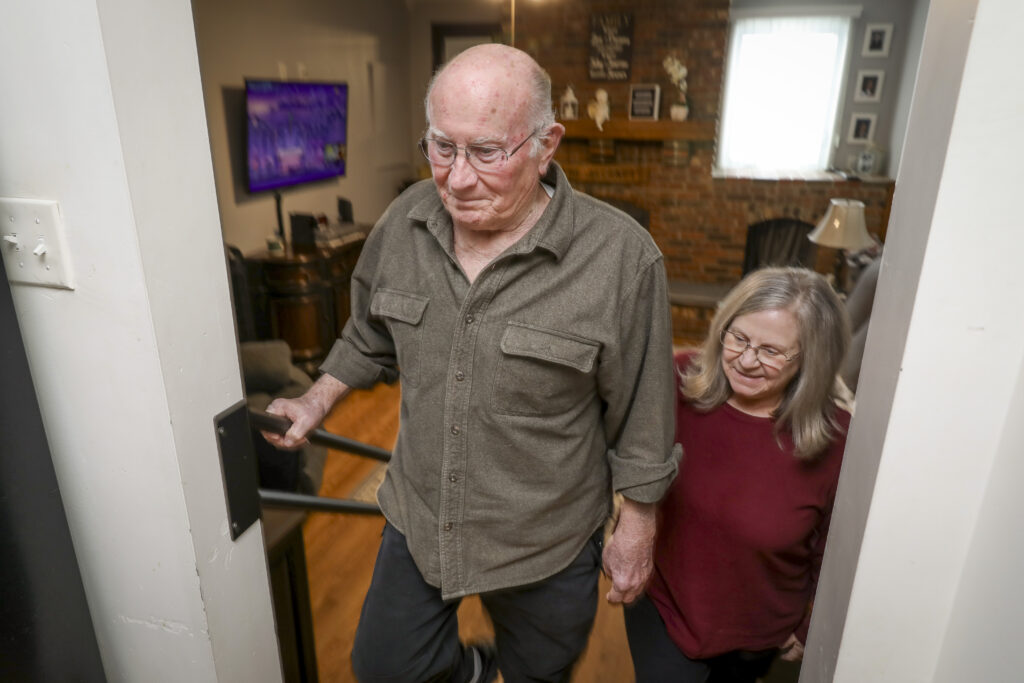
Before becoming ill, Bill, 76, owned a construction company. After selling the company, he took a job with the Lakota Local School District as a custodian and then shifted to working as a bus driver.
Kathy – Bill’s wife of 53 years – worked as an aide for the district. During the last year before Bill became sick, she rode as an aide on the bus Bill drove. “We were going to do it another year, but then this happened,” Kathy said, referring to Bill’s illness.
Their work with the school district was put on hold while the couple navigated the twists and turns Bill’s health would take during the better part of 2024. Attempts to clear the obstruction were unsuccessful, so doctors made a new opening in his stomach. Bill couldn’t keep food down and “he looked ill. He kept losing weight and he had no energy,” Kathy said.
Bill ended up on a ventilator and in the hospital for five weeks after he aspirated barium during placement of a nasojejunal tube for nutrition. The couple is fortunate to have three children and three grandchildren living nearby who provided support during his illness and recovery. “Every time I woke up in the hospital there was a family member there, so that was good,” Bill said.
When he was well enough, Bill was able to go home from the hospital rather than to a rehab center. “I bet it takes longer to get straightened up at a rehab. When you’re at home with the family, it gives you more to get going because you want to be with them,” he said.
Upon arrival home, however, it became clear there was a problem. To access the front door, there was a set of steps with no handrail. Bill was not yet strong enough to climb steps without help from two people. In addition, accessing the home’s lower level required navigating steps.
After one last bump in Bill’s road to recovery – he became malnourished and dehydrated and had a central line placed for nutrition – he settled in at home and the family made do with getting Bill in and out of the house with a two-person assist.
That summer, the couple’s son-in-law learned about Council on Aging (COA) and made a referral on their behalf. A COA care manager from its FastTrack Home program visited the couple at home within several days to assess their needs.
FastTrack Home is a transitional care program administered by COA that provides no-cost, temporary services to older adults upon return home from the hospital or skilled nursing facility. Its goal is to prevent expensive, and often traumatic, returns to the hospital.
The program launched in Butler County in 2024. “The cost of FastTrack Home is significantly lower than the longer-term Butler County Elderly Services Program,” said Ken Wilson, COA’s vice president of program operations.
Both programs are funded by the Butler County Senior Services Levy. FastTrack Home makes it financially viable to serve more older adults in the county with the funds available from the levy. “It’s a short-term intervention that helps people get back on their feet. We’ve found that about 60% of participants don’t need care after 60 days,” Wilson said.
Bill and Kathy qualified for railing installations at their front steps and the interior steps down to the lower level of their home. Some FastTrack Home clients qualify for services such as home-delivered meals, transportation, homemaking and other home modifications and durable medical equipment. All clients are assigned a care manager who coordinates their services and works with the client to ensure they are managing their medications properly and know how to recognize recovery “red flags.”
Bill and Kathy were thrilled with the installation of their stair railings. “There was no way we could have gotten those up by ourselves,” Kathy said.
“It’s a blessing to get up and down the steps. My worry was falling and with Kathy helping me she wouldn’t be able to hold my weight,” Bill said. “Once you’re able to take care of yourself, it’s great. I hate to depend on somebody else. I think we all do.” “If it hadn’t been for the FastTrack Home program, he would have been limited inside the house. We are outdoor people, and he wanted to go outside and sit in the lawn chair. If FastTrack hadn’t installed the handrails, we would have been stuck inside all summer. It’s a blessing that they came out and got those in for us,” Kathy said.
Healthy Aging grant helps fill unmet needs of Butler County older adults
In 2023, Butler County commissioners received a nearly $1 million Healthy Aging grant from the Ohio Department of Aging. The grants were intended to support the creation of new programs or bolster existing programs that focus on delivering services and supports that keep at-risk aging Ohioans in their homes and communities for as long as possible.
The grants were one-time allocations funded by ARPA and were required to be spent by Sept. 30, 2024. More than $40 million in Healthy Aging grant funding was awarded across Ohio’s 88 counties.
Counties were required to allocate a portion of the funding to food and housing assistance and internet access and digital literacy services. The remaining funds could be used to provide evidence-based services which aligned with Ohio’s 2023-2026 State Plan on Aging.
As the Area Agency on Aging for Butler County and the county’s partner in administering the local senior services tax levy, Council on Aging (COA) worked with the Butler County Elderly Services Program Advisory Council to make recommendations to county commissioners on how to use the grant dollars to address some of the most urgent, unmet needs of older adults in Butler County.
County Commissioners collaborated with COA to use funds for essential services for older adults in 2024. COA successfully delivered the services supported by the grant, serving more than 1,600 individuals.
COA’s Vice President of Program Operations, Ken Wilson, explained that the Healthy Aging grant funding arrived at a critical time for Butler County and other counties across the state. Wilson cited the end of pandemic relief funding, high inflation and a critical shortage of home care workers as negative forces draining local levy funding and creating pent up demand for home and community-based services.
“The Healthy Aging Grants provided an opportunity to take some pressure off local senior services tax levies and the Elderly Services Programs that they fund,” Wilson said. “This funding – although not permanent – helped us meet critical community needs and avoid waiting lists for services.”
Counties were required to spend at least 20% of Healthy Aging grant funds on housing assistance initiatives aimed at improving safety, accessibility, stability and independence for older homeowners and renters. In Butler County, a new Senior Utility, Home Repair and Emergency Housing Assistance Program provided several forms of assistance to 136 at-risk older homeowners and renters in the county:
- Assistance paying utility bills (gas or electric)
- Assistance making home repairs or modifications that promote safe, independent living (homeowners only)
- Emergency housing assistance in the form of rent payment assistance to avoid eviction (renters only) – in partnership with Butler County Department of Job and Family Services
This program served 136 individuals in 2024, including county residents Joan and Teri.
Joan:
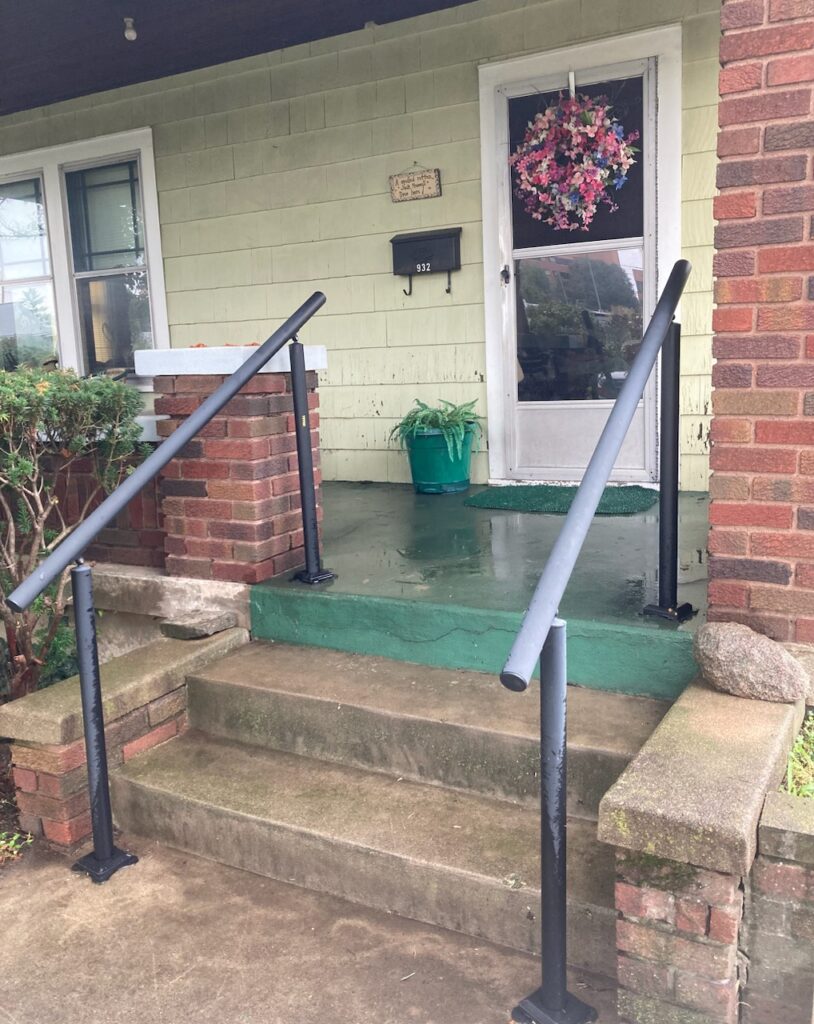
When you’re a four-time cancer survivor, three little steps shouldn’t seem like a big deal. But for Joan, those three steps were a major obstacle to her independence. With no handrails on the three steps leading into her home, she couldn’t come and go without hands-on assistance.
Through the Butler County Senior Utility, Home Repair and Emergency Housing Assistance Program, Council on Aging arranged for an approved contractor to install a set of handrails on the steps leading to her front door. Now Joan no longer needs assistance getting in and out of her home to get to medical appointments.
Teri:

A botched plumbing repair left Teri feeling like she was stuck in a nightmare she couldn’t wake up from. Her front sidewalk was destroyed – creating a safety hazard – and there was water in her basement. She applied for assistance through the Butler County Senior Utility, Home Repair and Emergency Housing Assistance Program. Council on Aging arranged for a qualified contractor to repair the leak and all related damage.
“I honestly don’t know what I would have done if they hadn’t fixed it,” Teri said. “I probably would have had to move out! I don’t know where I would have moved, my relatives are all out of state.”
Butler County Healthy Aging Grant Snapshot:
Butler County was awarded $955,927 in Healthy Aging grant funding, serving more than 1,600 eligible older adults. The grant:
- Created a new program aimed at providing utility assistance, home repairs/modifications, and emergency rental assistance to eligible older adults, serving 136 older adults.
- Provided home-delivered meals to 765 older adults.
- Assisted 259 individuals with digital literacy to receive home care, groceries and other needed services using available technology.
- Assisted 129 older adults with obtaining access to Medicare Advantage benefits to pay for transportation, meals and more.
- Implemented FastTrack Home Services to serve 212 older adults who needed assistance transitioning home from hospital and nursing facilities.
- Funded the evidence-based Uplift program to address depression and social isolation among older adults.
Scripps Gerontology Center completes evaluation of Butler County aging population
In 2024, Council on Aging contracted with Scripps Gerontology Center at Miami University to conduct an evaluation of the demographics of Butler County’s older adult population.
Information from the evaluation will be used to help determine the future of Butler County’s Elderly Services Program and the Senior Services Tax Levy that funds it. The first Butler County Senior Services Tax Levy was passed in 1996. The levy was last renewed by voters in 2020, but voters have not been asked to increase the levy since 2005. Since that time, the population of people age 60 and over in the county has grown 79%, and inflation has increased 62%.
A similar evaluation was last conducted in 2013. While Butler County’s older adult population has grown, results from the 2024 evaluation show significant changes in population growth projections compared to 2013. For example, in 2013, Scripps projected the county would experience a 50% increase in the population of adults age 85 and older between 2020 and 2040. In this latest evaluation, projections for this age group have been reduced to 36%. Scripps attributes the changes to the COVID-19 pandemic, which had a significant impact on the older adult population.
Key Findings from the Scripps Evaluation:
- Butler County has more than 83,000 residents aged 60 and older, accounting for 21% of its total population (6,200 of these individuals are aged 85 and older).
- Since the last Senior Services Tax Levy increase in 2005, the county population age 60 and older has increased by 70% and the 85 and older age group has increased by 50%.
- Between 2030 and 2040 the overall growth of the population age 60 and older will level out, but the 85 and older population will continue to grow, increasing by 32% to nearly 8,500 individuals.
- Butler County residents appear slightly less vulnerable than Ohioans statewide, but still:
- 30% live alone
- one in seven live at or below 100% of the poverty rate
- one in five homeowners and half of all renters pay more than 30% of their income for housing
- About 6,100 county residents age 65+ and older have a moderate impairment, and another 6,000 residents have a severe impairment.
- 12% or 7,100 adults age 65 and older in Butler County have Alzheimer’s Disease or a related form of dementia. More than 88% of these individuals are community residents (not in a nursing facility).
- The COVID-19 pandemic reduced the occupancy of nursing homes and assisted living facilities in the county, increasing reliance on the Elderly Services Program (in-home care).
- The Elderly Services Program is helping Butler County older adults remain independent and less reliant on nursing facilities or Medicaid-funded services, compared to the state average.
- Given the increase in the 85 and older population in particular, and the past overall population increases, it will be necessary for the county to either increase levy resources or modify expenditures by tightening eligibility criteria or reducing service coverage.
Council on Aging and the Butler County Elderly Services Program Advisory Council will use the Scripps evaluation to develop recommendations for the future of the Elderly Services Program. Recommendations will be presented to county commissioners for approval. The current Senior Service Tax Levy will expire at the end of 2025.
Click here to read the Scripps evaluation.
COA highlights resources at Butler County Aging Connections
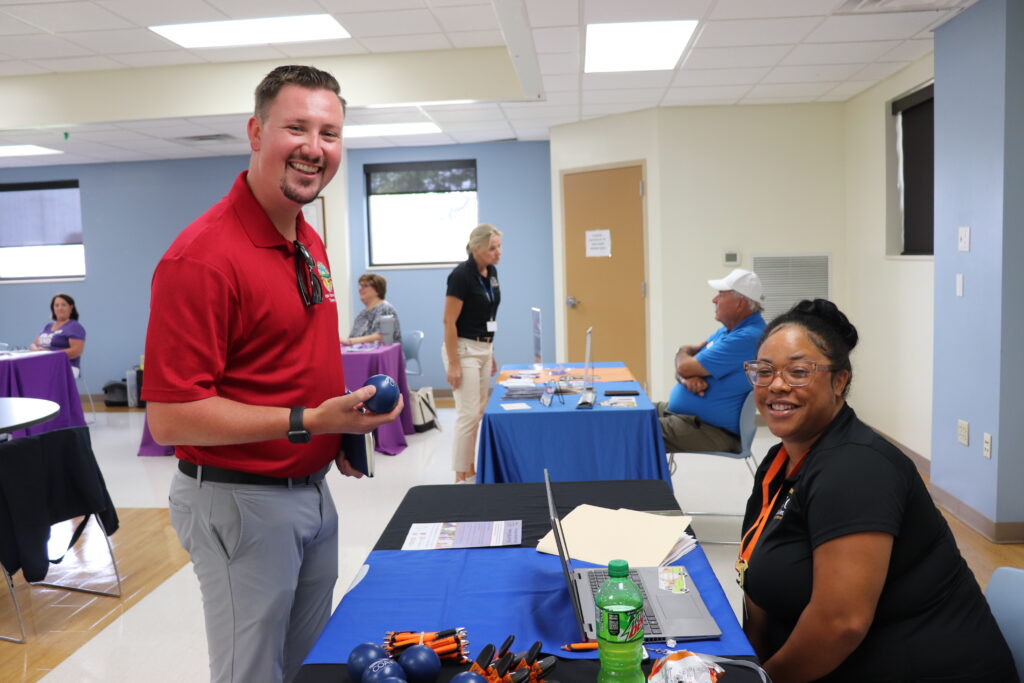
In August, Council on Aging partnered with other Butler County organizations to host Aging Connections, a resource fair for older adults and caregivers. Council on Aging, along with partners LifeSpan, MidPointe Library, Pro Seniors, Ohio Senior Health Insurance Information Program (OSHIP) and the Alzheimer’s Association Greater Cincinnati Chapter, shared resources available in Butler County. Special thanks to State Representative Thomas Hall for attending the event.
Clients count on each other and ESP
A knock on the door of the compact, tidy garden apartment triggers the insistent barking of a dog. When the door opens, JoJo the small white shih tzu/chihuahua mix serves as greeter, along with Don, 85, one of the human residents of the apartment.
It’s more difficult for Ann – the other human resident – to get to the door, as breathing can be a challenge due to her COPD. As a result, Ann, 66, is resting on the couch, tethered to her oxygen machine. Regardless, she gives a warm smile as she describes how the Bulter County Elderly Services Program (ESP) has helped her and Don remain independent.
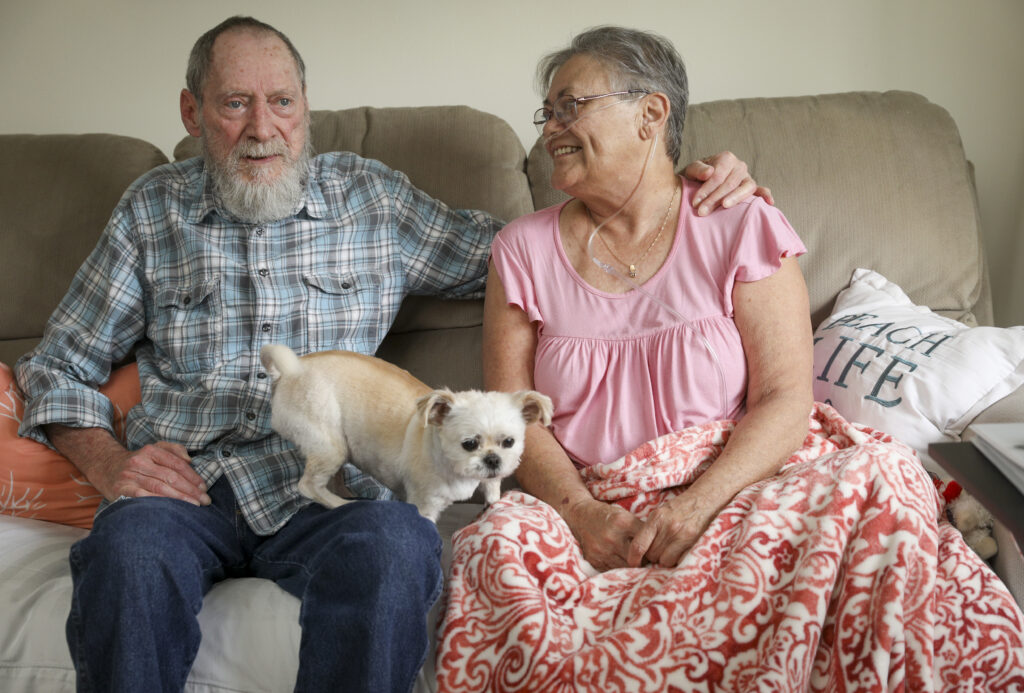
The former spouses – who between them have five children – began to share the apartment about five years ago to support each other and to save rent money. “We’ve always been friends because of our kids and were each paying around $700 for our own places so it made sense,” Ann said. “When you’re living on a fixed income, every bit of savings counts.”
Ann left the workforce early when her COPD was diagnosed in 2015 because it would have been unsafe to use an oxygen tank in her position as a quality engineer in the aerospace industry. Don worked as a painting contractor well into his 70s before hanging up his paintbrush.
Don also has COPD, but it’s not quite as debilitating as Ann’s. Regardless, there are many things to do around the apartment that require the strength and stamina he no longer has.
Don and Ann agree that perhaps the most helpful service they receive through ESP is assistance from their home health aide, Tina, who they hired directly though the consumer-directed care option offered by ESP. Consumer-directed care allows clients to become “employers” and hire their own “employees” instead of using a home care agency to provide certain services.
“We love, love, love her,” said Ann about Tina, who assists with laundry, vacuuming and other chores around the apartment, and is also permitted to run errands and drive Ann and Don to medical appointments when needed. In addition to the assistance provided by Tina, the duo receives home-delivered meals and transportation services, and in the past have received durable medical equipment for safety in the bathroom.
Ann saves her biggest raves for her ESP care manager, Monica, who she also “love, love, loves.” As their ESP care manager, Monica is tasked with ensuring Don and Ann have the services they need in the amounts they need at any given time.
She also goes the extra mile for them, according to Ann. “Monica takes the time to sit and talk to me and understand my requirements, what I need. She listens to me, makes suggestions if I don’t know something. We’re having a problem with the apartment – they’re almost doubling our rent – and I called her and I said, ‘I know this isn’t your job…’ but she went above and beyond by getting me a couple names of other places.”
No matter what happens with their living situation, Don and Ann know they will have the support of ESP and Monica – and each other.
COA service project restocks senior building community rooms
Service is one of Council on Aging’s (COA) values. Each quarter, COA employees complete a service project that benefits older adults living in its five-county service area.
For its summer 2024 project, staff brought new life to community rooms in five senior living buildings across COA’s service area. Often in these buildings, the community room is the heart of the building, where residents can join various enrichment activities and socialize with others. Most have a collection of games and other items residents can borrow or use right in the room.
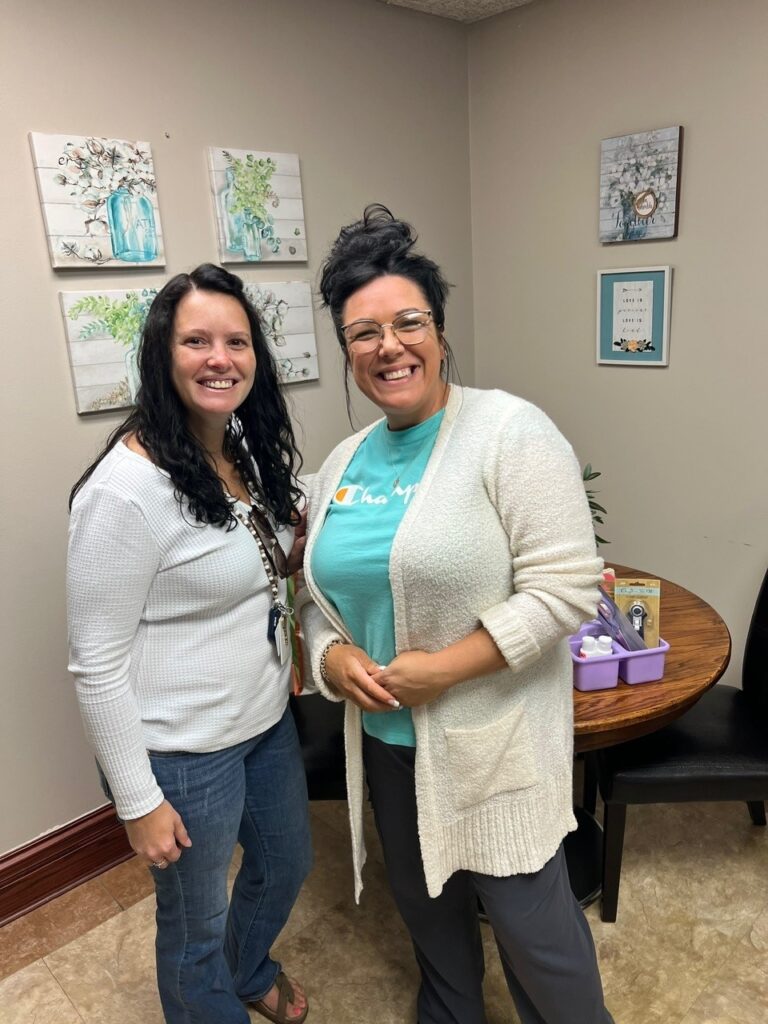
Through the service project, COA staff collected and donated crafts, games, puzzles and books to replenish the supplies in these community rooms, including at Butler County’s Belle Tower.
Building residents shared with COA staff that they were thrilled with the new activities and would enhance their daily lives.
Competitive bidding yields big savings for ESP
As ESP’s administrator, COA contracts with service providers to deliver services to clients. Contracts are awarded through a competitive bidding process. As with all COA services, the goal is to contract with the highest quality providers at the lowest possible price to serve as many clients as possible with the tax dollars available.
In 2024, COA issued a Request for Proposals (RFP) for Electronic Monitoring Systems (EMS). More than the traditional “lifeline” device, EMS is a flexible service that meets a variety of needs, including medication dispensers, smoke and carbon monoxide detectors, Alzheimer’s boundary alarms and GPS tracking devices, among others. It is a popular service within ESP – nearly 2,000 enrolled individuals used the service in 2024.
EMS providers offer similar services, often utilize identical hardware and have very scalable cost structures. With that in mind, COA sought a volume discount (across four counties) with a high-quality provider via a five-year contract. Since 2015, the previous single-sourced contract has saved nearly $5 million for senior services levies in Butler, Clinton, Hamilton and Warren counties.
In the case of the 2024 EMS RFP, COA anticipates the new five-year contract with Guardian Medical Monitoring will save an additional $1.5 million (20% reduction in previous contract costs), which amounts to $386,200 in savings for Butler County ESP. The new monthly service rate for EMS is $19 – a rate that is 42% lower than the Medicaid rate for the same service.
Advocacy efforts benefit older adults and service providers
As the Area Agency on Aging for southwestern Ohio, including Butler County, Council on Aging (COA) advocates on behalf of older adults and the provider network that serves them. In 2024, COA’s advocacy efforts focused on initiatives that reduced costs, eliminated regulatory burden, eased service access for clients and provided community education regarding senior service tax levies. Two advocacy highlights in particular stand out.
State rule change benefits home-delivered meals clients; cuts expenses
Due to COA’s persistence, one initiative came to fruition in 2024 after more than 10 years of work. In 2011, COA, other organizations and service providers began advocating with the Ohio Department of Aging (ODA) to loosen or remove the “diet order” in Ohio’s administrative code for clients receiving therapeutic home-delivered meals. Therapeutic meals follow specific nutritional guidelines for those who require a certain diet for health conditions, or are mechanically altered (chopped, mashed, etc.) for safe chewing and swallowing.
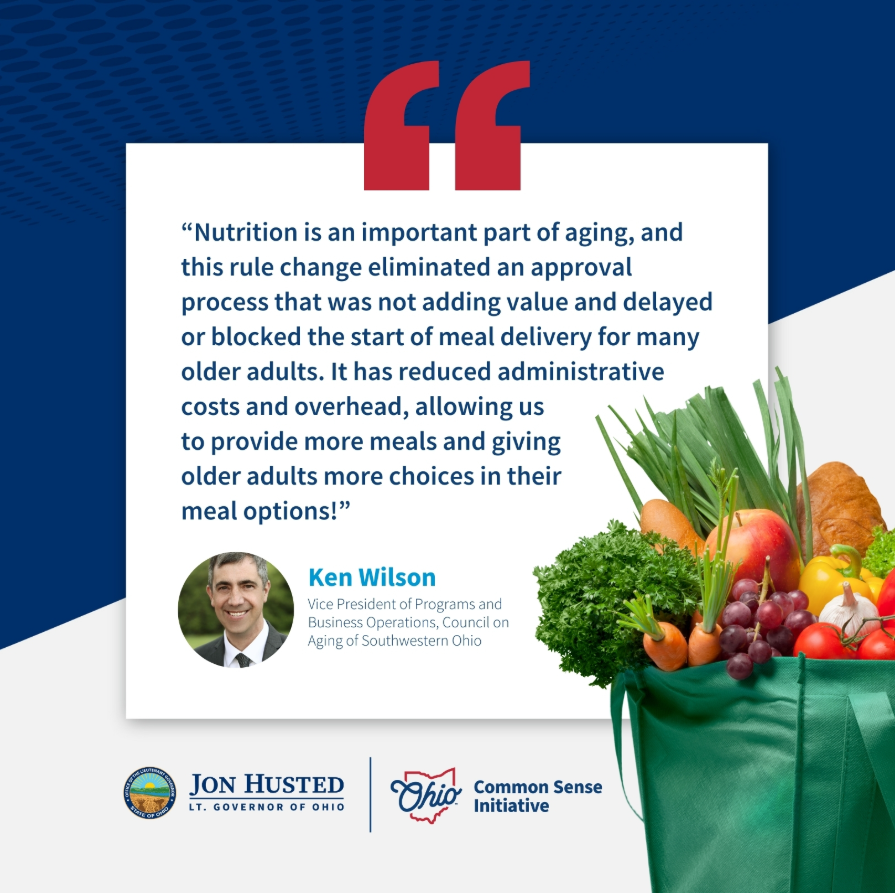
The diet order required a prescription from a physician for a client to receive therapeutic meals. “The requirement imposed a huge burden on home-delivered meal providers and COA’s care management staff,” said Ken Wilson, COA’s vice president of program operations, who was instrumental in advocating for the rule change. Additionally, “other states didn’t have the requirement,” he said.
COA submitted a formal proposal for a change in 2019, but it received no traction. Then, COA Government Relations Director Nan Cahall suggested making the case for a rule change through Ohio’s Common Sense Initiative (CSI), which reviews state agency regulations as potential obstacles to business.
COA partnered with home-delivered meals provider Meals on Wheels of Southwest OH & Northern KY to make its case: that the rule required a tremendous amount of unnecessary time and resources to obtain prescriptions from physicians who were generally not equipped to provide them quickly. And most importantly, it delayed older adults receiving the appropriate meals.
CSI investigated and met with ODA and the Ohio Department of Medicaid to advocate for the rule change. In 2024, the rule was successfully amended to allow flexibility in the prescription requirement.
“The change not only allows more personal choice and autonomy for older adults but is helping us achieve our main goal: to ensure the health and safety of our clients by providing the correct meal without unnecessary delays,” Cahall said.
COA and providers are also saving money as a result of the rule change. “We saw a 5% reduction in home-delivered meal expenses in our Elderly Services Program (ESP) in Butler County,” Wilson said. “This is helpful when we’re facing budget challenges. It allows us to serve more older adults.”
Additionally, Meals on Wheels was able to eliminate a $40,000/year position that was dedicated to prescription management.
New community education initiative begun
At its core, advocacy is about education. In 2024 COA and the Butler County Elderly Services Program Advisory Council undertook a new initiative to educate the public about the value of programs supported by their tax dollars.
The senior services levy in Butler County provides most of the funding for services available to older adults in the county, including the Elderly Services Program. While voters in Butler County have been supportive of the levy, passage is never guaranteed. If the levy fails to pass, ESP would end, as there are no other sources available to fund it.
The Butler County levy will be up for renewal in the fall of 2025. Given this, members of the advisory council – a citizens group that provides oversight of ESP on behalf of Butler County commissioners – gave nine presentations to community and governmental organizations throughout the county.
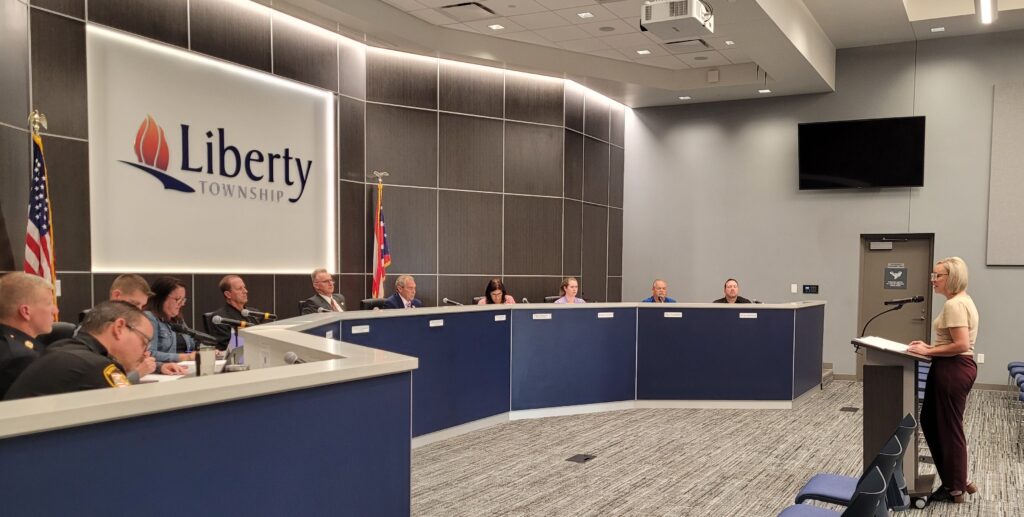
They reviewed with audiences the program’s annual report, which is published yearly as a report to the community.
“I was proud to present the annual report to several local governments this year. The taxpayer-funded Elderly Services Program is vital in supporting more than 4,000 older residents in Butler County. The positive reception from local communities and governments highlights the strength of this essential community partnership,” said Shawn Cowan, a member of the Butler County Elderly Services Advisory Council and a county resident.
